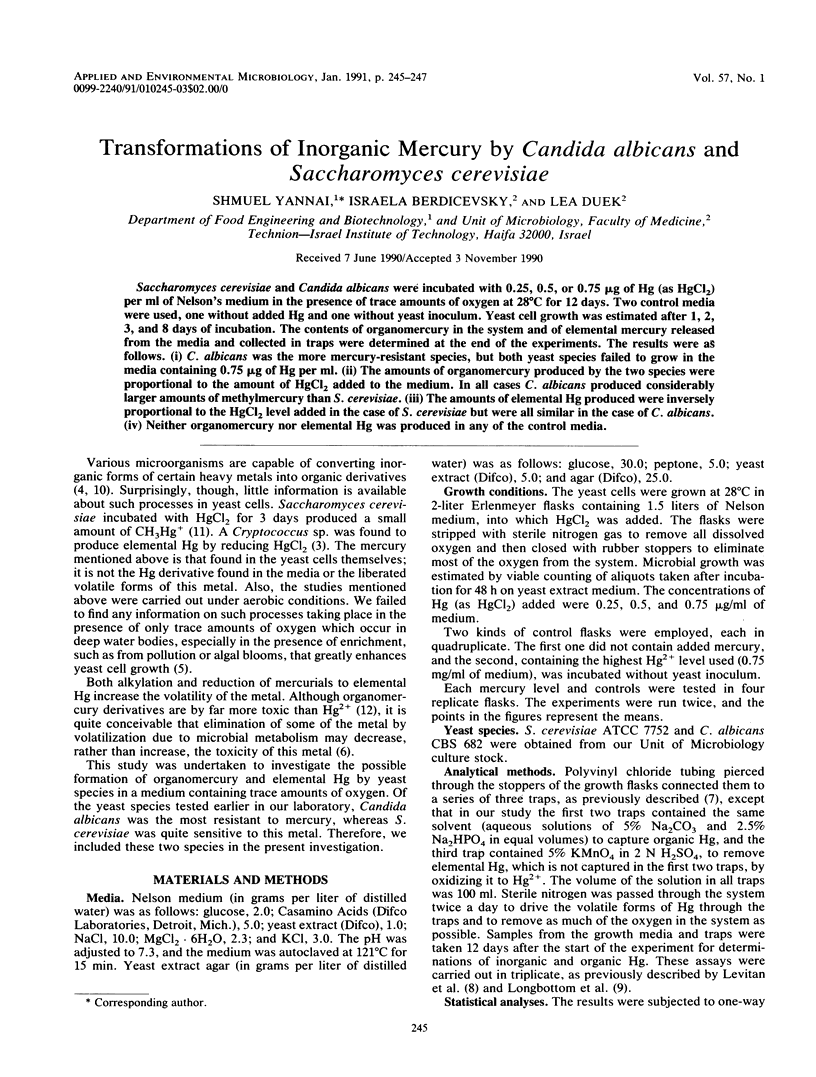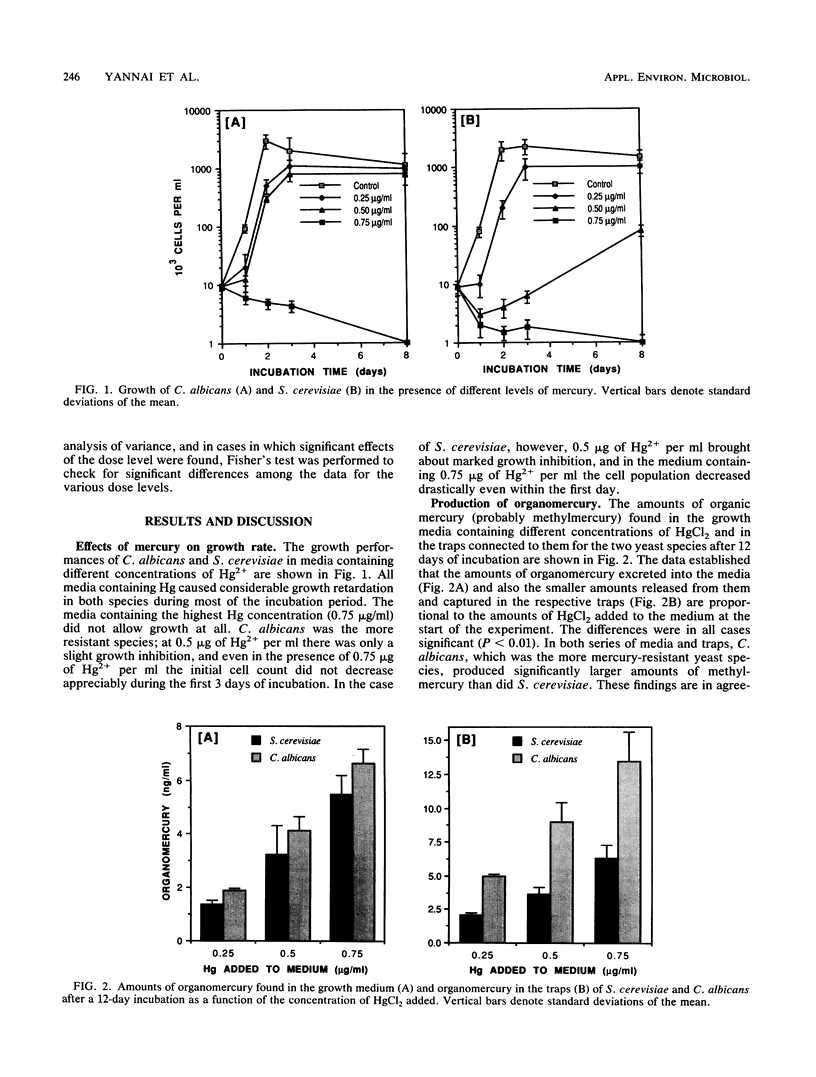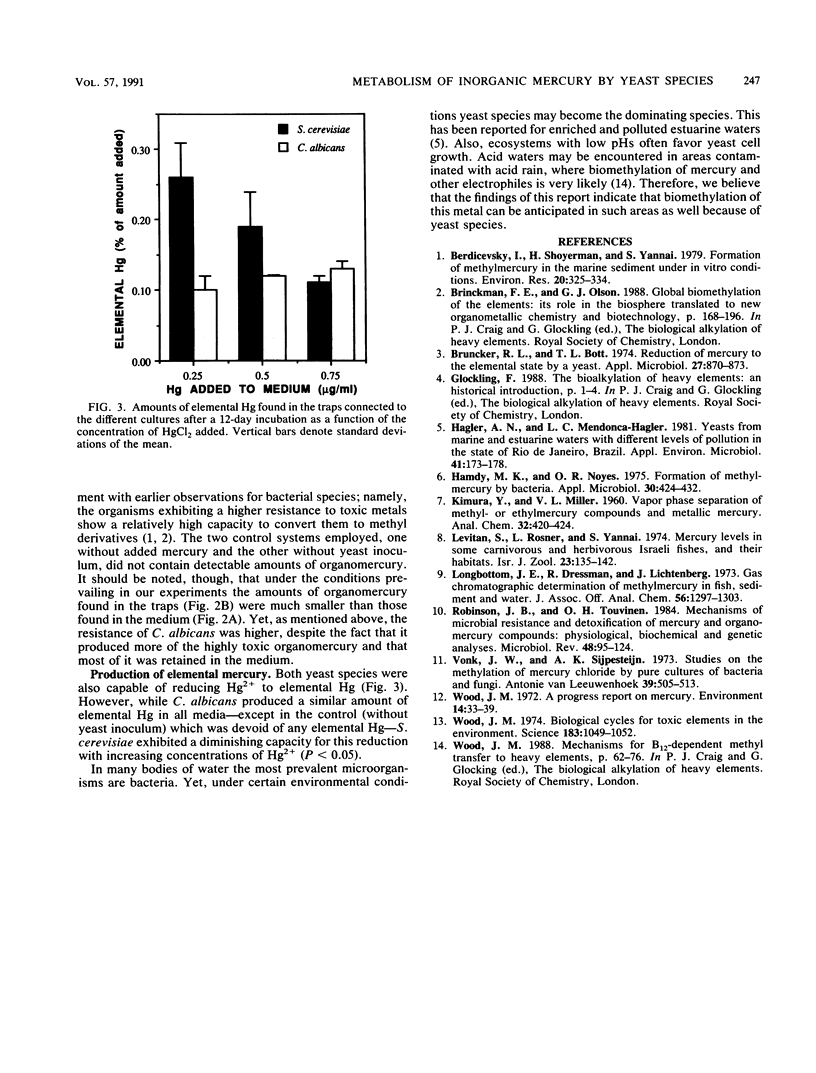Abstract
Saccharomyces cerevisiae and Candida albicans were incubated with 0.25, 0.5, or 0.75 micrograms of Hg (as HgCl2) per ml of Nelson's medium in the presence of trace amounts of oxygen at 28 degrees C for 12 days. Two control media were used, one without added Hg and one without yeast inoculum. Yeast cell growth was estimated after 1, 2, 3, and 8 days of incubation. The contents of organomercury in the system and of elemental mercury released from the media and collected in traps were determined at the end of the experiments. The results were as follows. (i) C. albicans was the more mercury-resistant species, but both yeast species failed to grow in the media containing 0.75 micrograms of Hg per ml. (ii) The amounts of organomercury produced by the two species were proportional to the amount of HgCl2 added to the medium. In all cases C. albicans produced considerably larger amounts of methylmercury than S. cerevisiae. (iii) The amounts of elemental Hg produced were inversely proportional to the HgCl2 level added in the case of S. cerevisiae but were all similar in the case of C. albicans. (iv) Neither organomercury nor elemental Hg was produced in any of the control media.
Full text
PDF


Selected References
These references are in PubMed. This may not be the complete list of references from this article.
- Berdicevsky I., Shoyerman H., Yannai S. Formation of methylmercury in the marine sediment under in vitro conditions. Environ Res. 1979 Dec;20(2):325–334. doi: 10.1016/0013-9351(79)90008-2. [DOI] [PubMed] [Google Scholar]
- Brunker R. L., Bott T. L. Reduction of mercury to the elemental state by a yeast. Appl Microbiol. 1974 May;27(5):870–873. doi: 10.1128/am.27.5.870-873.1974. [DOI] [PMC free article] [PubMed] [Google Scholar]
- Hagler A. N., Mendonça-Hagler L. C. Yeasts from marine and estuarine waters with different levels of pollution in the state of rio de janeiro, Brazil. Appl Environ Microbiol. 1981 Jan;41(1):173–178. doi: 10.1128/aem.41.1.173-178.1981. [DOI] [PMC free article] [PubMed] [Google Scholar]
- Hamdy M. K., Noyes O. R. Formation of methyl mercury by bacteria. Appl Microbiol. 1975 Sep;30(3):424–432. doi: 10.1128/am.30.3.424-432.1975. [DOI] [PMC free article] [PubMed] [Google Scholar]
- Robinson J. B., Tuovinen O. H. Mechanisms of microbial resistance and detoxification of mercury and organomercury compounds: physiological, biochemical, and genetic analyses. Microbiol Rev. 1984 Jun;48(2):95–124. doi: 10.1128/mr.48.2.95-124.1984. [DOI] [PMC free article] [PubMed] [Google Scholar]
- Vonk J. W., Sijpesteijn A. K. Studies on the methylation of mercuric chloride by pure cultures of bacteria and fungi. Antonie Van Leeuwenhoek. 1973;39(3):505–513. doi: 10.1007/BF02578894. [DOI] [PubMed] [Google Scholar]
- Wood J. M. Biological cycles for toxic elements in the environment. Science. 1974 Mar 15;183(4129):1049–1052. doi: 10.1126/science.183.4129.1049. [DOI] [PubMed] [Google Scholar]


